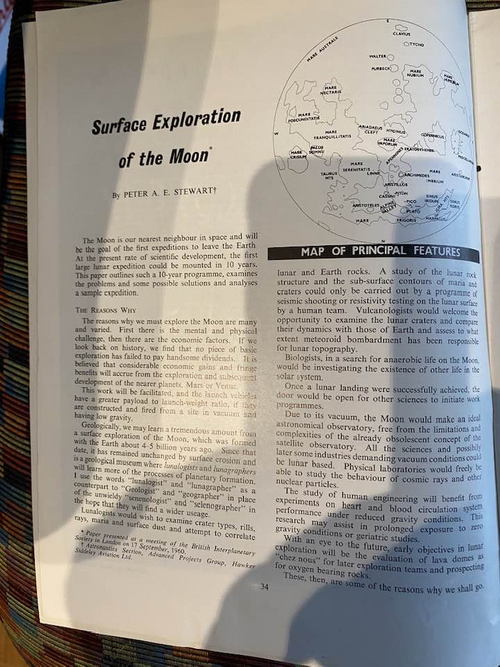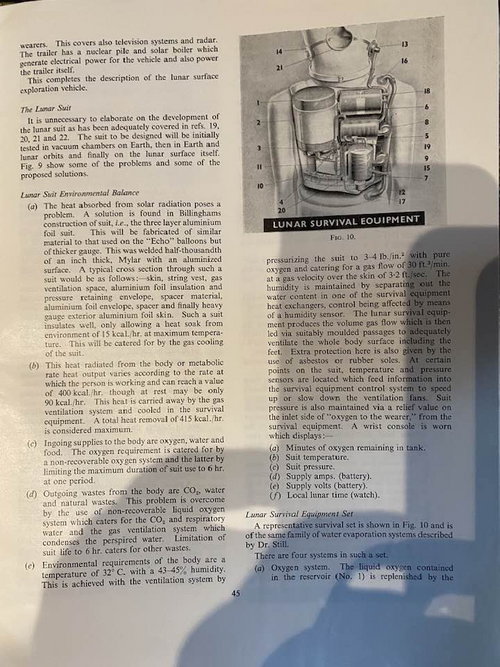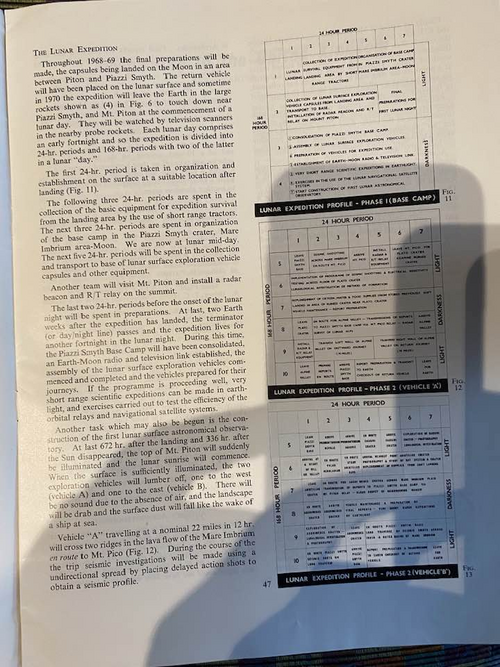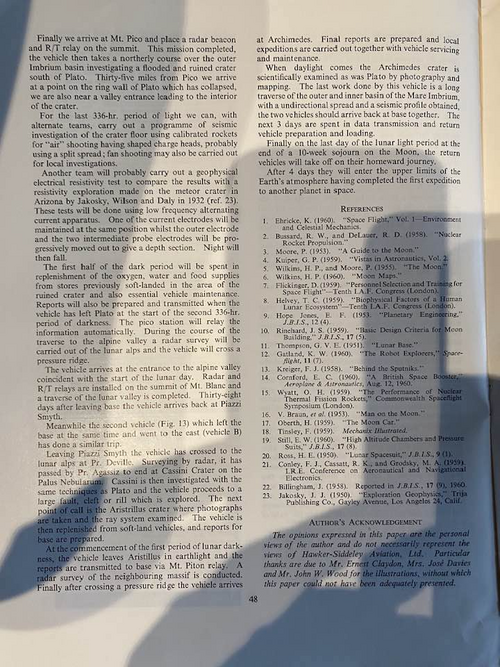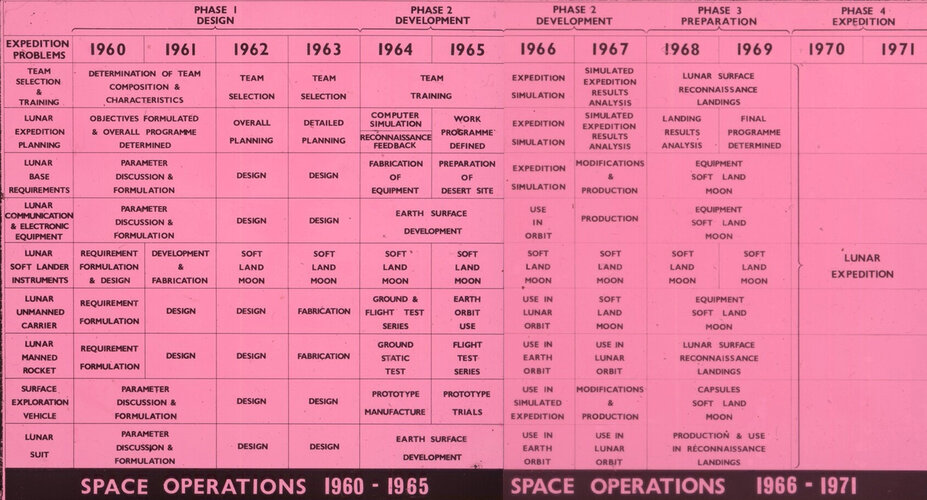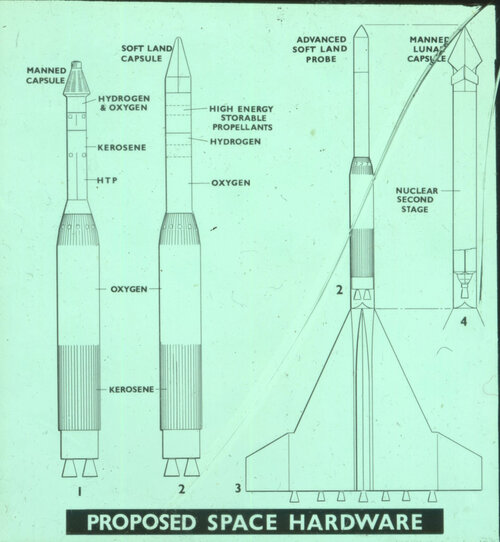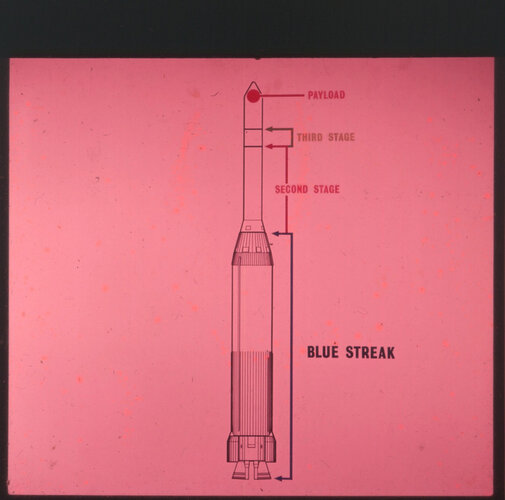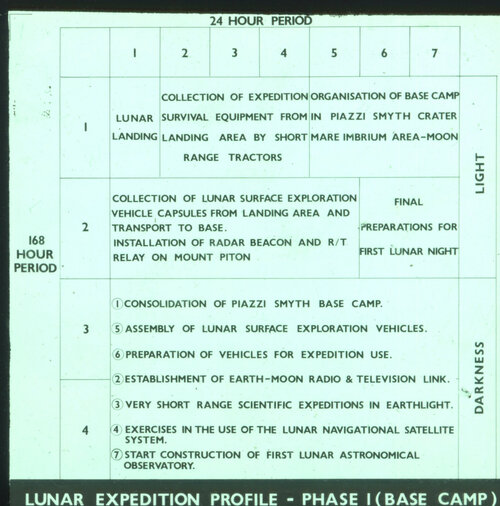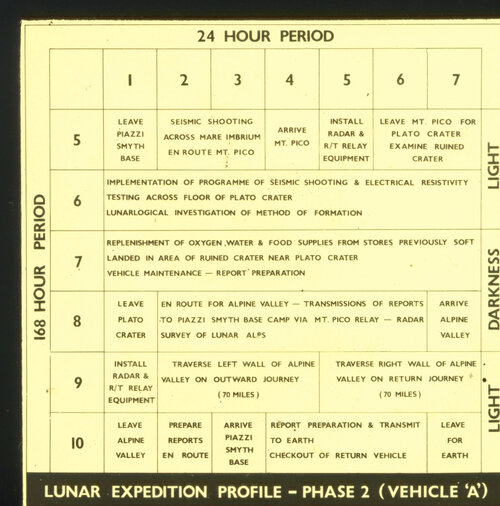- Joined
- 13 August 2007
- Messages
- 8,411
- Reaction score
- 10,889
back in 1960 P. A. E. Stewart proposed a British manned Moon Program
with the use of Blue Streak and Black Knight technolgy
phase 1, 1960 to 1963 first probes (ranger types) to the moon
Phase 2, 1964 to 1967 Hardware testing on earth Low orbit and Lunar Orbit.
phase 3, 1968 to 1969 the first manned landing in Piazzi Smyth crater
Phase 4, 1970 to 1971 The lunar surface expedition (70 days)
the First Rockets are Blue Prince like
(Blue Streak HTP/Rp-1, second stage with 4 stenton engine and later Lox/Lh2 upper stage)
for Manned Lunar Landing they need bigger Rocket
the Blue Streak is modifed to 12 x RZ.2 engine in first stage and reusable
the second stage is a Blue Prince or a Nuclear upper stage
with ammonia- or hydrogen-fueled, it brings 7 tons to lunar surface
i nic name this one Blue Dart or Black Dart ;D
the Landing take place on in Piazzi Smyth crater, near Mt. Piton in Mare Imbrium.
on Phase 4 there small Lunar base were surface expedition hardware is assembling
landed by unmanned cargo flights
the Expeditions are two teams.
one move to northward for Mt. Pico, Plato, and Alpine Valley.
at Plato they resupply by unmanned Cargo lander
two move southward, exploring Cassini, Aristillus, and Archimedes craters.
at Aristillus they resupply by unmanned Cargo lander
as Capsul they use Mercury type spacecraft
later a Armstrong Whitworth waverider (lifting body)
http://beyondapollo.blogspot.com/2009/02/surface-exploration-of-moon-1960.html
Surface Exploration of the Moon, P. A. E. Stewart,
Spaceflight, Volume 3, Number 2, March 1961, pp. 34-48;
paper presented at the British Interplanetary Society, London, United Kingdom,
September 17, 1960.
question
has some one more info on this Big Lunar Rocket ?
thanks in advance
with the use of Blue Streak and Black Knight technolgy
phase 1, 1960 to 1963 first probes (ranger types) to the moon
Phase 2, 1964 to 1967 Hardware testing on earth Low orbit and Lunar Orbit.
phase 3, 1968 to 1969 the first manned landing in Piazzi Smyth crater
Phase 4, 1970 to 1971 The lunar surface expedition (70 days)
the First Rockets are Blue Prince like
(Blue Streak HTP/Rp-1, second stage with 4 stenton engine and later Lox/Lh2 upper stage)
for Manned Lunar Landing they need bigger Rocket
the Blue Streak is modifed to 12 x RZ.2 engine in first stage and reusable
the second stage is a Blue Prince or a Nuclear upper stage
with ammonia- or hydrogen-fueled, it brings 7 tons to lunar surface
i nic name this one Blue Dart or Black Dart ;D
the Landing take place on in Piazzi Smyth crater, near Mt. Piton in Mare Imbrium.
on Phase 4 there small Lunar base were surface expedition hardware is assembling
landed by unmanned cargo flights
the Expeditions are two teams.
one move to northward for Mt. Pico, Plato, and Alpine Valley.
at Plato they resupply by unmanned Cargo lander
two move southward, exploring Cassini, Aristillus, and Archimedes craters.
at Aristillus they resupply by unmanned Cargo lander
as Capsul they use Mercury type spacecraft
later a Armstrong Whitworth waverider (lifting body)
http://beyondapollo.blogspot.com/2009/02/surface-exploration-of-moon-1960.html
Surface Exploration of the Moon, P. A. E. Stewart,
Spaceflight, Volume 3, Number 2, March 1961, pp. 34-48;
paper presented at the British Interplanetary Society, London, United Kingdom,
September 17, 1960.
question
has some one more info on this Big Lunar Rocket ?
thanks in advance

























